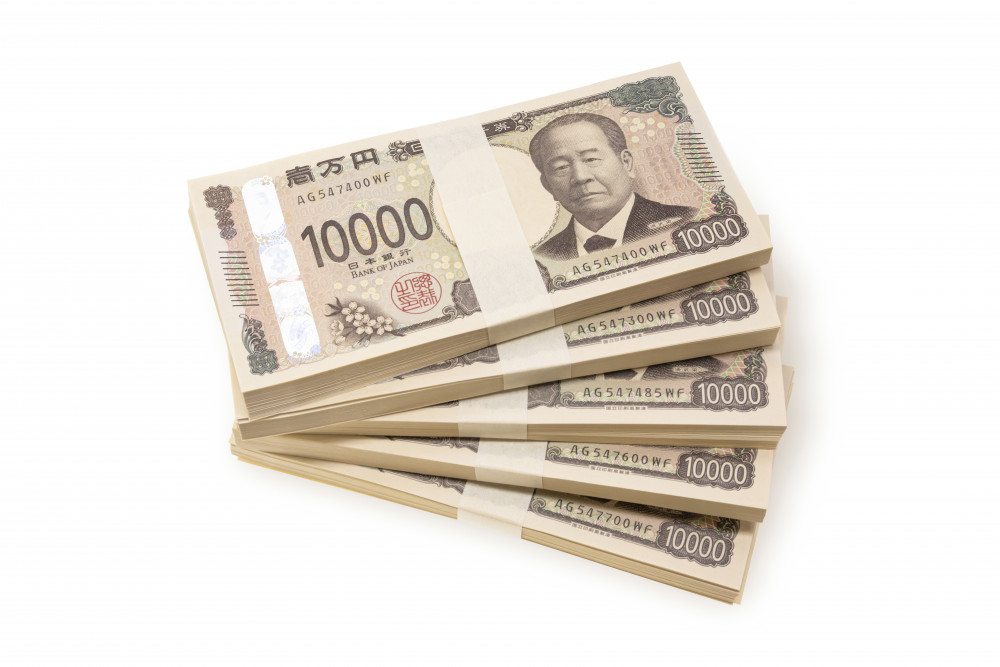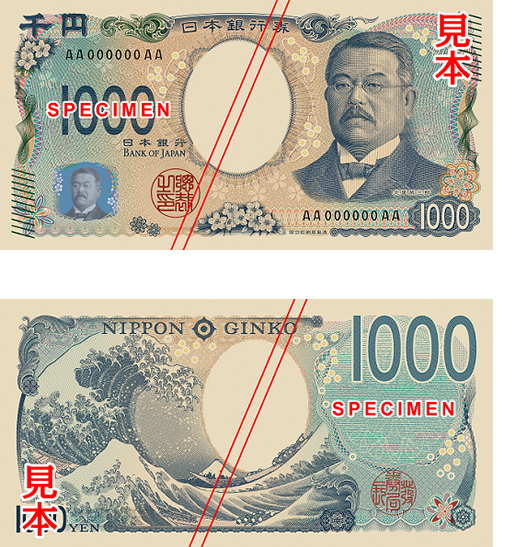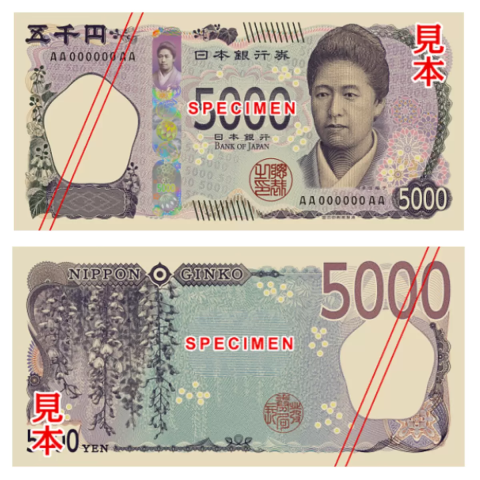
July 11, 2024
Bank of Japan Introduces New Banknotes
Check out the designs of Japan's new generation of banknotes
Bank of Japan issued new designs of the ¥1,000, ¥5,000 and ¥10,000 banknotes on July 3. Each note is adorned with holographic elements – anti-counterfeit technology – and a new set of historical figures.
The ¥1,000 Note

Much like the current ¥1,000 note, the modernized version still has the classic blue hue. On the front is a portrait of Kitasato Shibasaburo, a Japanese physician and bacteriologist renowned for his significant contribution to medicine. Shibasaburo has been continuously commended throughout history, for his professionalism, scientific curiosity and impactful work. His face on the note acts a symbol of dedication and focus, something we can each carry in our daily lives.
In 1894, Shibasaburo was sent to Hong Kong during the devastating outbreak of the bubonic plague. Here, his determination was challenged, but he prevailed with a fantastic discovery. Within a few weeks, he identified the causative organism of the plague, which we now recognize as “yersinia pestis.”
Following this, Shibasaburo aided thousands of people and gained recognition from the Japanese Medical Association founded in 1923. Emperor Taisho honored him as the first president and later appreciated him as a baron the following year.
The back of the banknote exhibits a famous Japanese woodblock print (or ukiyo-e) by Katsushika Hokusai. “Under the Wave of Kanagawa,” also known as “The Great Wave,” derives from the series “Thirty-six Views of Mount Fuji.” This particular piece has remained highly influential ever since its creation in the Edo period, back in 1831. The wave demonstrates towering waves framing Mount Fuji and proves as a culturally significant graphic of Japan. Three fishing boats are depicted beneath the wave, struggling against the sea, representing the dynamic between nature’s force and humanity.
The ¥5,000 Note

Retaining its iconic purple shade, the note features wisteria flowers on one side.
Tsuda is admired for actively contributing to society and encouraging women to recognize the opportunities in education. Her legacy has been honored into the present day through Tsuda University, which continues to reinforce empowerment and academics for women.
Encouraging women to reflect on their capabilities, Tsuda inspired generations of women and rapidly modernized 20th-century Japan. The ¥5,000 aims to bring her efforts to light and further integrate gender equality into Japanese culture.
In support of Tsuda’s legacy, Japanese wisteria flowers enhance her teachings of courage, symbolizing love and longevity. Commonly seen in art, poems and kimonos, wisteria have been appreciated for their gracefulness and represent forthcoming generations. This is interpreted as a demonstration of progression within Japan’s society where men and women can live in harmony. Wisteria flowers are cherished by Buddhists who view the flower as if they are “bowing” which connotes ideas of peace and respect for all.
The ¥10,000 Note

Shibusawa Eiichi is featured on the front of the new ¥10,000 banknote. A highly prominent industrialist and banker, Shibusawa was known as the “father of Japanese capitalism.” As one of the founders of the modern Japanese industry, he brought Western capitalism to Japan and introduced several economic reforms that have benefited the structure of present Japanese banking.
During the Meiji Restoration, a period of industrialization in Japan, he pursued a career in business and finance and was acknowledged for his ethical business practices and social responsibility. He brought the importance of balancing economic growth with social welfare and ethics, which laid out a clear and humane infrastructure for the industrial society of Japan.
Highly regarded for his entrepreneurial spirit and ethical leadership, his strength is reflected by the Tokyo Station Marunouchi Station Building printed on the banknote’s back. Famous for surviving the Great Kanto earthquake and World War II fire bombings, the Marunouchi Building towers 180 meters over Tokyo Station, and currently houses shops, restaurants and offices. After being rebuilt to restore the damage from the war, the Tokyo Station Marunouchi Building has become a historic landmark for its functional representation of Japanese modernization and the country’s evolution in architectural and cultural landscape.







